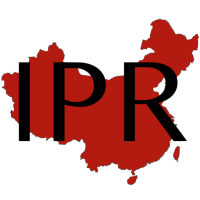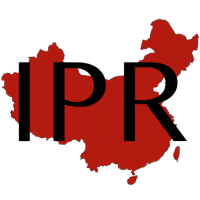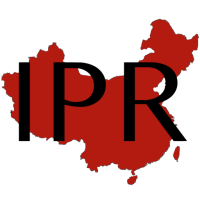
On June 1, 2021, both the revised Copyright Law and Patent Law will come into effect. On May 24, 2021, CNIPA published its “Interim Measures on Disposition of Examination-Related Activities Post Patent Law Implementation” (CNIPA Notice Number 423)《关于施行修改后专利法的相关审查业务处理暂行办法》的公告(第423号)(“Interim Measures”). The Interim Measures address the needs of the patent office of CNIPA to address concrete examination issues in the absence of higher-ranking implementing regulations, such as those CNIPA proposed on November 27, 2020, the Recommendations for Amendments to the Implementing Regulations of the Patent Law (Draft for Comment)《专利法实施细则修改建议(征求意见稿)》. In fact, the drafting of the Implementing Regulations is referred to 17 different times in the Interim Measures. By comparison, there are no comparable interim measures in place to handle the upcoming transition period in copyright law implementation, nor has a public draft of proposed implementing regulations been made available by the National Copyright Administration. The Interim Measures had been since placed on the official Chinese government website www.gov.cn, as well, on May 27, where they are listed as belonging to the legislative category of “public notice” (公告),a vague category that unclearly fits within the schema of China’s Law on Legislation (LoL).
Companies filing patents in China should consider consulting with their counsel and review their patent filing dates and deadlines to maximize the advantages provided by the new patent law and the Interim Measures. In practical terms, the Interim Measures offer guidance on several issues. One is providing for partial design protection. (Art. 1). Filings for designs made after June 1 will also benefit from the extended 15-year term of protection for design patents. (Art. 10). The second is drug patent term adjustments and extension. A patent term adjustment is available within three months from the date that the patent right is granted, and a patent term extension is available within three months of approval of the new drug marketing authorization from the NMPA upon submissions of the relevant forms and fees (Arts. 5, 6). The third is the availability of recordation of patents for “open licensing,” effective June 1 (Art. 7). The fourth is the beginning of availability of patent evaluation reports to the accused infringer in a patent dispute over utility models or designs (Art. 8). Fifth is the commencement of good faith and potential harm to the public substantive examination or reexamination of patent applications beginning June 1, 2021. (Art. 9). There are also many non-examination issues in the patent law that are not addressed by the Interim Measures, including patent linkage. In addition, as explained in the Responses to Questions Concerning Disposition of Examination-Related Activities Post Patent Law Implementation (关于施行修改后专利法相关问题解答), which accompanied the Interim Measures , changes in examination practices may not be implemented until after the revised Implementing Regulations are in effect. Despite the possibility of such delays, by implementing the improvements in patent prosecution and examination afforded by the patent law revisions, the Interim Measures also ensure adoption of Article 84 of the LoL. The LoL permits retroactive application of any Implementing Regulations that better protect the rights and interests of citizens and prohibits retroactive legislation that restricts rights.
In an ideal world, plans for research or drafting of legislation would be announced on the drafting agency’s website, while plans for enactment of legislation would be on the website of the agency with authority over passage of the legislation. Implementing Regulations may be drafted by the Ministry of Justice, although line agencies may also take a role. The Ministry of Justice, which has taken over the formal drafting responsibilities for many regulations, has not posted any plans for drafting of patent, trademark, or copyright law implementing regulations. SAMR’s legislative plan for 2021 does include the drafting of the Patent Law Implementing Regulations (Item 6 under “Laws and Regulations”). There was also no mention made of trademark law Implementing Regulations in either the 2019, 2020 or 2021 SAMR legislation plans. The 2021 State Council Legislative Plan has not yet been released. The State Council did not mention the drafting of any new implementing regulations for patents, trademarks, or copyright in its 2020 legislative plan.
For some non-IP laws, the drafting of implementing regulations has often taken years. Nonetheless, when Chinese agencies are interested, they often find ways to advance legislative processes. CNIPA certainly tried to jump-start a draft of implementing regulations when it solicited comments on its recommendations for a draft patent law implementing regulations in November 2020 A similar strategy had been used by NCAC to prioritize drafting of the revised copyright law, which it publicly commenced in 2012, by releasing its own draft for public comment. There had also been more recent efforts to “front-load” administrative positions in the legislative system through CNIPA and NMPA proposing rules in advance of the law in patent linkage.
If one looks at the record of accomplishment in other IP-related legislation during the past several years, there is actually a mixture of rapid and delayed responses in enacting legislation of various kinds. For example, amendments to the highly trade-sensitive trade secret provisions of the Anti-Unfair Competition Law were enacted on April 23, 2019, with an effective date of the same day. The Foreign Investment Law (FIL) came into effect January 1, 2020 and Implementing Regulations for the FIL were passed by State Council December 31, 2019, with a contemporaneous effective date of January 1, 2020. The SPC has been passing a range of judicial interpretations. For example, the JI on punitive damages was passed on February 7, 2021 with an effective date of March 3, 2021.
Controversies over proposed implementing legislation may also delay finalization of relevant measures. The Phase 1 Trade Agreement committed China to a path of pharmaceutical IP reforms that may be encountering domestic opposition. Draft measures of various kinds on patent linkage have not yet been finalized, including a proposed judicial interpretation. China’s proposed Orange Book has only recently been made available for public testing. After considerable pressure from the Phase 1 Trade Agreement and years of bilateral negotiations, China had once again reformed its examination guidelines on pharmaceutical patents in December, 2020 (国家知识产权局关于修改《专利审查指南》的公告(第391号)》(See the USPTO translations of proposed linkage rules.)
In comparison to the delays in patent linkage legislation, China has now undertaken steps to reduce both patent and trademark subsidies in order to address newly elevated issues involving application quality. This was not an issue contemplated by the Phase 1 Agreement and was only brought to the fore in recent months. The contemplated steps are both fast and disruptive. They include removing subsidies by the end of June 2021 and establishing a new goal of 8.3 patents per 10,000 people by the end of 2022, a significant drop from 12.5 invention patents per 10,000 people, which was the goal of the 13th Five Year Plan. Only a few years ago this might have been seen more as administrative chutzpah than legal authority. Today, CNIPA is directly legislating to reverse direction on a past five-year plan commitment, and it is not doing this through a State Council regulation or other appropriate legislation through SAMR, nor through an interagency enactment.
This situation is vastly different from the period before the trade war and the State Council reorganization of the same year (2018), when Implementing Regulations were typically issued simultaneously or shortly after the passage of each new IP law. While Implementing Regulations were not always models of clarity, their apparently diminished role in Chinese IP legislation is concerning. Administrative Regulations did provide an additional check on administrative agency discretion and also provided useful support for judicial decision-making regarding civil liability.
I spoke with several practitioners about these lacunae of IP implementing regulations. Some practitioners believed that patent law Implementing Regulations are forthcoming, in the near-term notwithstanding the lack of State Council-level involvement thus far. A trademark practitioner questioned whether Implementing Regulations for trademarks are necessary in light of other developments in the courts and agencies. At an English-language IP student moot court last sponsored by the Beijing Foreign Studies University involving OEM liability for trademark infringement (the Pretul case, and other conflicting decisions), students and judges focused on “case law,” rather than statutory interpretation or legislative intent in revising the trademark law. No one addressed my questions concerning whether what constitutes “use” of a trademark in the export of goods was considered by the NPC in the recent revisions to the trademark law or whether further clarifications should be made by implementing regulations or other legislation. I was left wondering whether case law, as well as other laws, such as the Civil Code, LoL, or simply the common changes made in the various IP laws on such areas as burden of proof reversals and punitive damages, partially fill in the gap left by unrevised Implementing Regulations.
Although CNIPA is advancing the drafting and implementation of the Implementing Regulations through its promulgation of the Interim Measures, there may be other motivations affecting IP-related legislation of various types. One mundane factor may be that there simply has been too much legislation too quickly during the middle of a pandemic, and Chinese regulators need time to further implement the vast changes in China’s IP regime made over the past several years. Another factor may that some administrative agencies may now be maximizing their discretion through minimizing the “middleman” of State Council-enacted implementing regulations. Stanley Lubman, in his classic Bird in a Cage: Legal Reform in China After Mao (1999) described the “broad, indeterminate language” of administrative rulemaking that enables lower-level officials to enlarge their discretion, which is not otherwise “effectively controlled.” This discretion might also affect the timely, complete implementation of legislative elements of the Phase 1 Trade Agreement.
- $FIL
- 000
- 2019
- 2020
- 2021
- 7
- 84
- 9
- activities
- Additional
- Adoption
- Agreement
- All
- announced
- Application
- applications
- April
- Art
- article
- Arts
- authorization
- availability
- Beijing
- China
- chinese
- code
- comments
- Common
- competition
- consulting
- copyright
- Council
- Court
- Courts
- Dates
- day
- delay
- delays
- Design
- DID
- Dispute
- Drop
- drug
- Effective
- export
- FAST
- Fees
- Free
- gap
- good
- goods
- Government
- HTTPS
- Including
- intent
- investment
- IP
- issues
- IT
- Justice
- Law
- Laws
- Legal
- Legislation
- liability
- Licensing
- light
- Line
- March
- Marketing
- months
- offer
- official
- opposition
- order
- Other
- pandemic
- patent
- Patents
- People
- Pharmaceutical
- pressure
- proof
- protect
- protection
- public
- quality
- range
- reduce
- Regulation
- regulations
- Regulators
- Reports
- research
- reverse
- review
- rules
- Share
- Sponsored
- stanley
- State
- Strategy
- Student
- studies
- support
- system
- Testing
- time
- trade
- trade secret
- trademark
- university
- utility
- war
- Website
- within
- WordPress
- world
- year
- years







